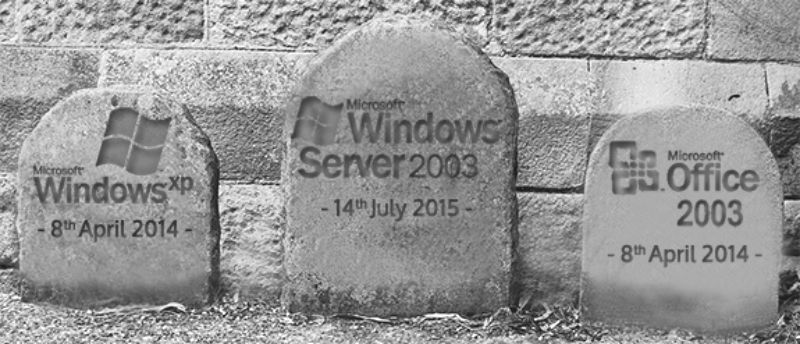The Windows Server 2003 end-of-life replacement cycle could top $100 billion in migration-related solutions, including new hardware, software, cloud-based solutions, and associated services, according to a new Spiceworks report.

The Windows Server 2003 end-of-life replacement cycle could top $100 billion in migration-related solutions, including new hardware, software, cloud-based solutions, and associated services, according to a new Spiceworks report surveying 1,300 IT professionals in North America, EMEA and Asia Pacific.
Microsoft (MSFT) will stop actively supporting the Windows Server 2003 OS platform on July 14, 2015. The Spiceworks report, entitled “The Great IT Upgrade,” examines the financial and technology impact Windows Server 2003 end of life will have on IT departments.
An earlier Spiceworks study of some 200 IT professionals released ahead of the final report revealed that a lack of time, budget constraints and applications compatibility issues are three of the primary reasons why many IT organizations won’t beat the July 14 deadline when Microsoft stops supporting the OS.
“This migration will impact millions of IT professionals and nearly every technology segment including hardware, software, cloud, mobile and services,” said Sanjay Castelino, Spiceworks marketing vice president.
“IT professionals are taking steps to migrate prior to the end of life deadline and technology companies who can offer a clear, elegant migration path have a multi-billion dollar opportunity to help IT departments transition effectively,” Castelino said.
Some 61 percent of companies Spiceworks survey maintain at least one instance of Windows Server 2003 running within their environment, amounting to millions of installations across both physical and virtualized infrastructures. On average, companies are allocating about $60,000 for use in migration-related projects, Spiceworks said.
Here are some of the study’s highlights:
On migration plans.
15 percent of IT professionals surveyed have fully migrated their environment while 48 percent have partially migrated and 28 percent remain in the planning stages.
8 percent of IT professionals have no plans to migrate at all.
On migrating to Windows Server 2012 R2.
64 percent of IT professionals plan to migrate from Windows Server 2003 to Windows Server 2012 R2
14 percent plan to migrate to Windows Server 2012
9 percent plan to migrate to Linux/CentOS.
On virtualization.
64 percent of IT professionals who are either fully, partially, or planning to migrate, will move applications currently running on Windows Server 2003 to a virtualized environment
34 percent plan to move applications from a physical to a new virtual environment while 31 percent will move applications from a physical to an existing virtualized server
On hardware and software purchases.
31 percent of respondents plan to purchase new physical servers and operating systems
16 percent plan to purchase standalone server software for existing hardware
12 percent of respondents plan to move to a cloud/hosted solution.
On Windows Server 2003.
22 percent of IT professionals do not plan to upgrade every system currently running Windows Server 2003
About the Author(s)
You May Also Like


